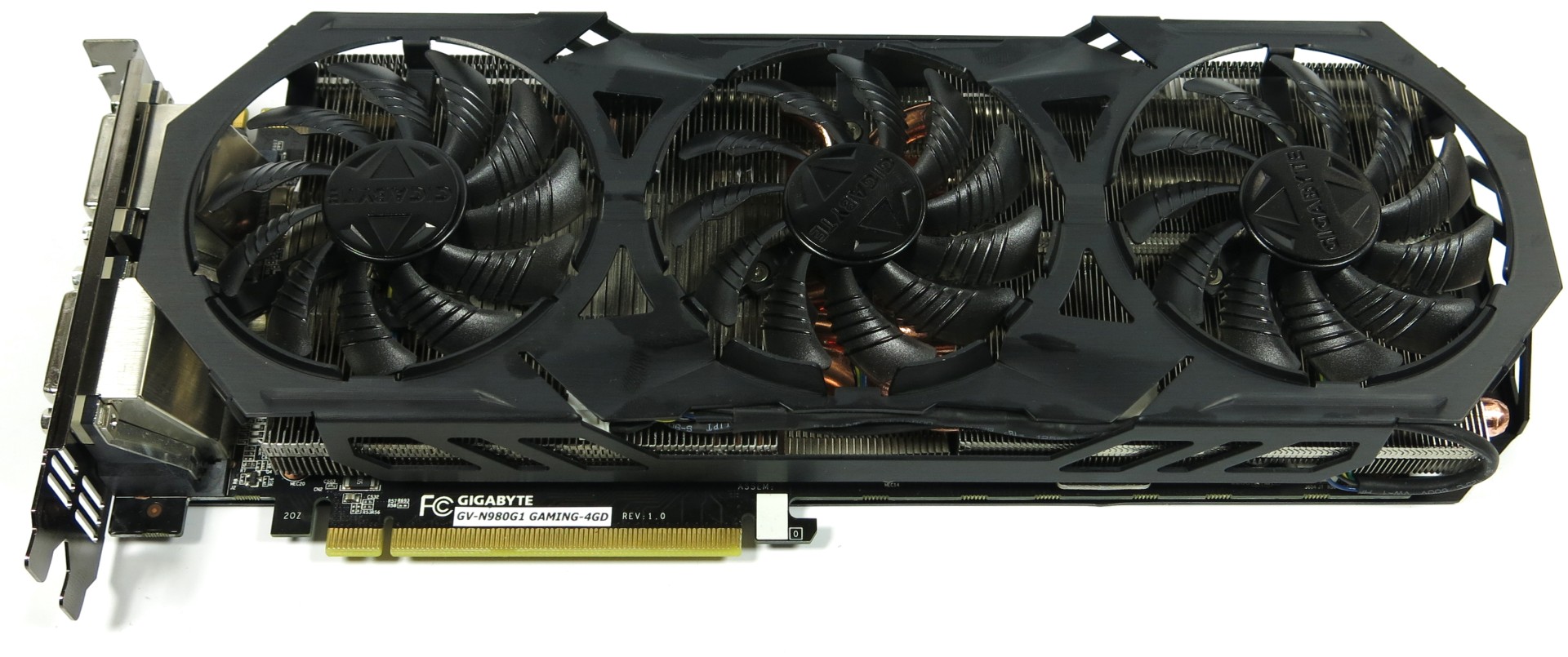Nvidia GeForce GTX 970 And 980 Review: Maximum Maxwell
Efficiency
Frankly, though, the GeForce GTX 980's primary purpose is gaming. So to be fair, we're only looking at the card's efficiency in that context. After the launch, we'll spend more time covering the other disciplines in a follow-up story.
Maxwell does very well, even without Gigabyte’s golden sample factored in. This observation is based on the power consumption measurements in our 2014 VGA charts. If Nvidia's reference GeForce GTX 980 sets the bar at 100 percent, then all of the other Maxwell-based cards fall in line right above it. Non-Maxwell-based boards show up below. Not surprisingly, Gigabyte’s golden sample ends up at the top, and even manages to pass a GeForce GTX 750 in the process, which is no small feat for a card built using a large GPU.
Thinking back to the maximum versus average power consumption findings for gaming, one fact becomes abundantly clear: AMD’s issue is not absolute performance or the efficiency of its architecture, but rather that PowerTune technology can’t adjust the power consumption quickly or finely enough depending on the actual load. This is exactly where Nvidia scores most of its points with Maxwell.
But even Nvidia can’t change the laws of physics. The new cards’ power consumption during compute-based testing demonstrates this fact very clearly. There are some ways around these laws, however, and the company's engineers seem to have found them. A gamer would say that they simply have the better skills.
Get Tom's Hardware's best news and in-depth reviews, straight to your inbox.
Don Woligroski was a former senior hardware editor for Tom's Hardware. He has covered a wide range of PC hardware topics, including CPUs, GPUs, system building, and emerging technologies.
-
lancear15 I was waiting for Tom's review to make my final decision, the 980 is definitely going into my current 5960x build! I cant wait.Reply -
HKILLER so how long before you do a round up?i mean this time i've seen some pretty crazy looking cards (Zotac's Extreme AMP! edition looks crazy and the Inno3D too)and EVGA has shown off ACX 2.0 which they claim to be the most efficient GPU air cooler in the world...so many to choose from also EVGA FTW has been nicely overclocked i've seen it performing almost on par with 980Reply -
realibrad byt he way... Last page 2nd sentence after the graph of Avg game performance.Reply
I was hoping for more performance but the efficiency is quite nice. They just put pressure on the top end and gave us a price reduction, instead of overall performance gains. -
balister Very nice, but I still want to see what the power consumption along with what might be possible with the drop to 20nm (since this is still 28nm).Reply
Likely, we're going to see a Maxwell Titan equivalent come in the next year or so as these are a x04 much like Kepler with the 670/80s were and we're still going to be waiting to see what the x10 will be with the Maxwell architecture. -
MANOFKRYPTONAK Why didn't you include an overclocking comparison? Why didn't you include the 780, but included the 770? Doesn't make much sense...Reply -
vertexx 970 is the real story until the 980ti comes out - what a value proposition with the 970!Reply
Good stuff here - but you guys were a bit slow on this one. Tom's Hardware is the first site I visit every morning. But with the delay of this article, I've been all over the net this morning on other sites that got their stuff out sooner. -
daveys93 Will there be a follow-up article about overclocking these cards? Other sites are showing results that both of the new cards are capable of 1500+ MHz on air (aftermarket coolers and even a few with stock coolers), which is a massive overclock. Looks like NVIDIA left the door open for some decent voltage increases, but many results have been in the 1450-1500 MHz range at stock voltage. I am a big fan of the thoroughness of Tom's articles so I am very interested in seeing overclocking results and analysis from this site.Reply

